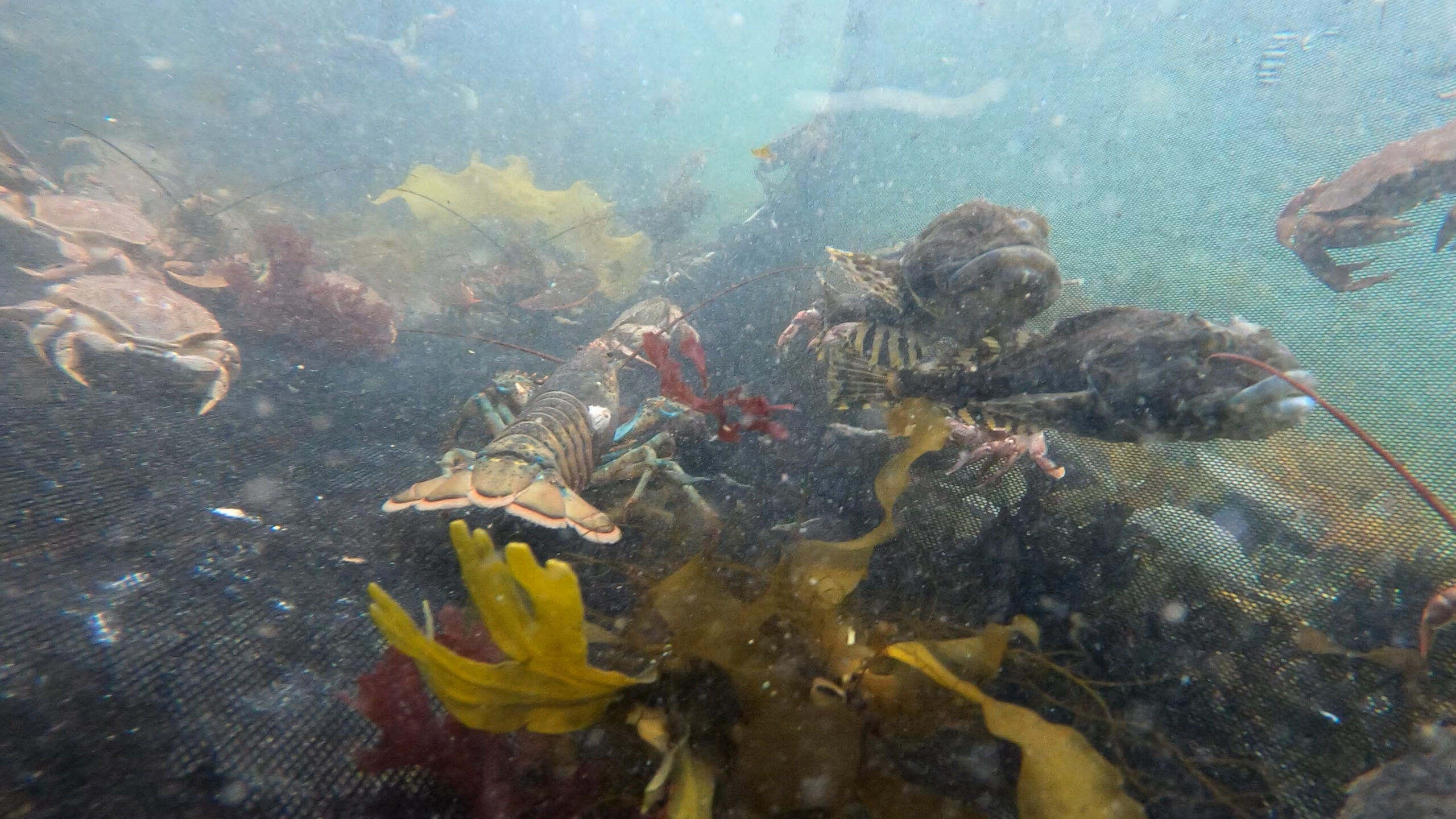
SIZE : Up to 64 cm.
LIFE EXPECTANCY : From 11 to 12 years.
LIFE CYCLE : Spawning takes place at night, near the end of winter and in spring.
Females lay up to 2,500,000 eggs that will stick to the bottom, generally at shallow depths. The young are born after 2 to 3 weeks and spend most of their first year in estuaries. After 2 to 3 months, the eyes of the winter flounder will have migrated to the right side.

Credit : Jean-Christophe Lemay, photo taken at Rimouski, in 2018, at 5 meters of depth.
The winter flounder is a flatfish. Its eyes are both located on the right side. This side’s color varies depending on its environment, from reddish-brown to earthy brown, olive green or almost black, and sometimes spotted. Its blind side is white. It has a small mouth with few teeth, a large, rounded caudal fin, and an a mostly straight lateral line. The head and body are covered in scales, which are resistant and rough on the ocular side and smooth on the other side. It has scales between its eyes.
On the bottom, at depths of around 100 m.
The winter flounder tolerates variations in salinity. It can, therefore, be found in brackish waters. It favors temperatures between 12 °C and 15 °C.
PREYS :
Molluscs
Small crus-taceans
Eggs of fishes
PREDATORS :
Sea ravens
Monkfishes
Seals
Spiny dogfish-es
Seabirds
MACHINES : Gillnets, trawls.
REGULATIONS :
Winter flounder fishing in the Gulf of St. Lawrence has been closed since 2023.
In Canada, commercial fishing for winter flounder began in 1948. More recently, winter flounder has been fished to be used as bait. The massive decline in this species is attributed to climate change, over-fishing, poor management, pollution, and increased predation by gray seals. Although the threat from fishing has been reduced, the lack of recovery persists and the situation emphasizes the urgent need to protect the marine environment.
BENEFITS :
Winter flounder is a good source of vitamin B and potassium.
LET’S COOK :
Flaky, slightly soft texture. Mild taste. Fine, slightly sweet, subtle flavor.
The skin is edible, but winter flounder is more often served as a fine fillet, without the skin.
OUR CULINARY ADVICE :
- Winter flounder rolled in flour and fried in butter is delicious.
- Quick cooking is preferable to prevent the flesh from falling apart.





